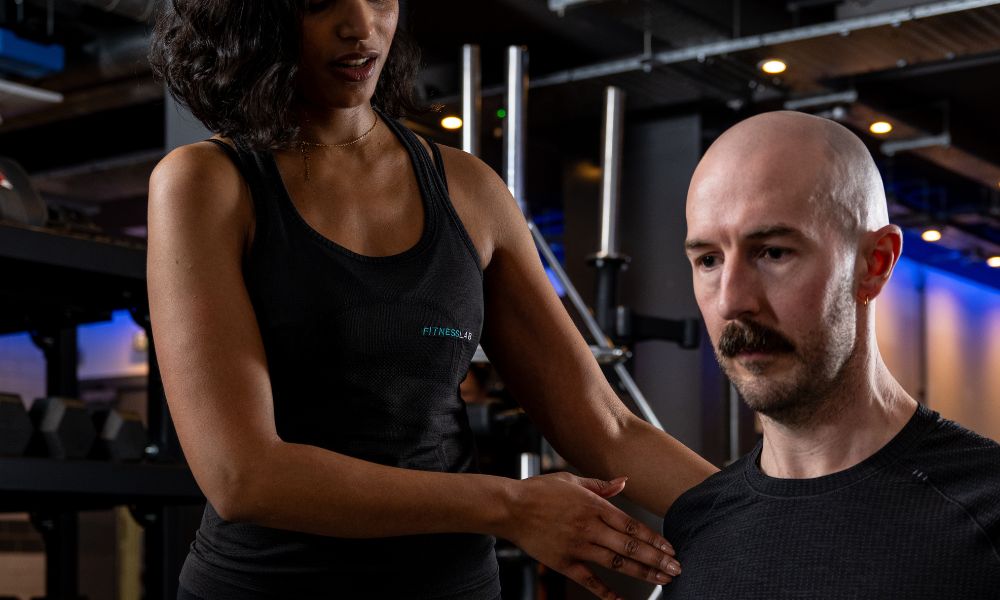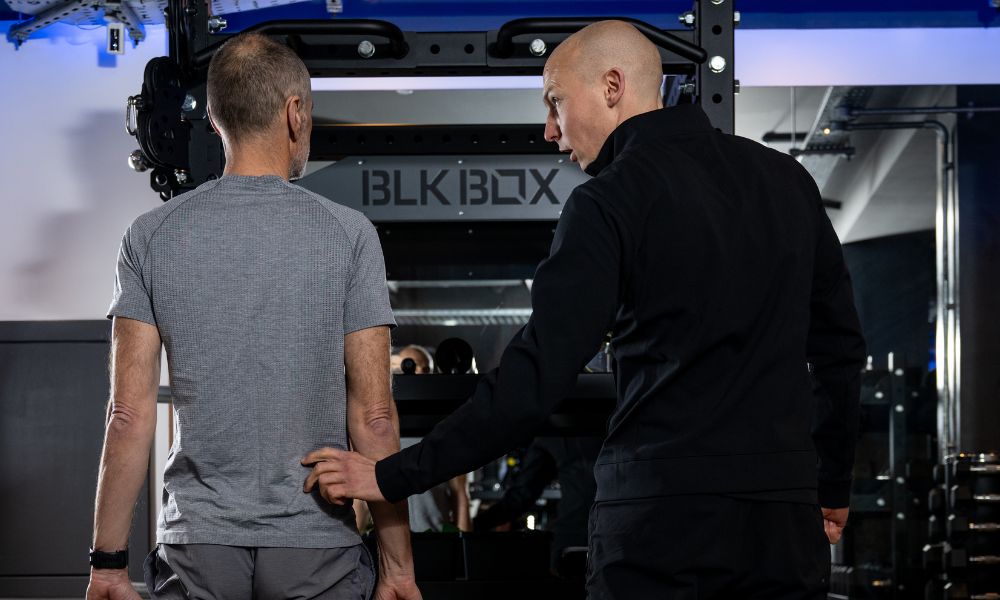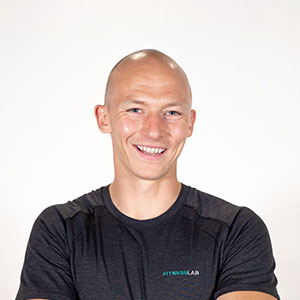Lots of people assume that there’s a level of fitness required just to get started with personal training for longevity and general health, but this couldn’t be further from the truth. In fact, it’s a thought that holds a lot of people back from exploring working with a personal trainer.
Here, we’ll take a more detailed look at starting longevity training – hopefully helping to overcome any feelings of hesitancy you might have and exploring why now is a great time to get started – regardless of your body weight, exercise history, or any other thoughts that might be holding you back.
We’ll also answer some frequently asked questions and address some frequent misconceptions about personal training for longevity – to hopefully add to your confidence moving forward.
Fitness is NOT a Prerequisite for Longevity Training
In much the same way you don’t need to be a driver before learning to drive; you really don’t have to be fit to start a journey towards better health and fitness.
This misconception often comes about because of the ‘off-the-peg’ nature of many fitness classes or personal training programs. Turn up to a local spin class, and you’ll typically be thrown in at the deep end with a trainer who only has the capacity to provide one vigorous exercise program for the entire room. Likewise, some personal trainers will simply try to fit you into a pre-conceived program that’s worked for other clients – despite those clients being entirely different to you.

The right personal trainer will do things differently though – and that starts with thoughtful and detailed initial consultation. During a consultation, your coach will get to know you – covering things like exercise history (or lack of it, which is equally acceptable), any past injuries, your likes and dislikes, and other questions that help them get a good picture of your current health.
In many ways, coming to a consultation and personal training sessions with a low level of fitness is a great place to start – it means you’re likely to see and feel big improvements in the coming weeks.
“Will I Be Expected to Start Lifting Weights Immediately?”
If you’re worried about being handed a fully-laden barbell straight through the door – please don’t panic; it’s not how anyone with a good understanding of strength training (or physical activity in general) will approach things.
Lifting weights, generally referred to as ‘resistance training’, is an important part of longevity training – but, when it comes to this kind of exercise, starting low and focusing on technique is absolutely essential.
When it comes to weights, whether you’re dealing with free weights or machines, the technique involved with moving them properly is referred to as ‘form’. In some cases, incorrect form will make it feel like you can move larger weights quicker – but it’s not the way to progress in a meaningful way (it’s also a fast-track way to injury or discomfort).
We’ll always focus on making sure your form is correct before we recommend upping the weight you’re moving. In time, adding weights comes with a fantastic sense of achievement – and will often go hand-in-hand with feeling postive physical and mental changes in wider life.
Other Elements of Fitness To Think About
It’s tempting to think about a level of fitness as the distance you can run, the weight you can lift, or how long you can work out at high effort. In reality though, health and fitness spans a much greater area than these kinds of measures – especially when you’re thinking about longevity.
An ultra-marathon runner might appear fit, but if they’re sleeping poorly for 4-5 hours a night and grabbing a petrol station lunch every day, science and sports medicine tell us that they’re not considering the bigger picture when it comes to longevity.

Your coach will talk to you about sleep, nutrition, and a host of other fitness factors to build a picture of your overall health. Then, alongside your studio sessions, they’ll help you think about fine-tuning these factors. That might be tips on how to get a better night’s sleep, how to fit some walking into an already busy day, or some easy-prep meals to replace order-in food.
Don’t panic, though; there’s always going to be nights when ordering food is more practical, a few drinks might be needed to unwind, you can’t avoid a late night, or the call of the dessert is strong! A healthy approach to longevity doesn’t mean must-not-break rules or a lack of flexibility – quite the opposite actually. By thinking about all the factors that add up to a longer, healthier life and applying small, manageable changes daily, you’re buying yourself a tremendous amount of flexibility on those days when other life factors get in the way.
“What’s a Good Age for Starting Longevity Training?”
Longevity training is a lot like investing or paying into a pension – everyone wishes they’d started in their twenties, but failing that, the age you are right now is the best time to plan for the future.
A mixture of aerobic exercise and strength training, healthy diet, and improved sleep hygiene all benefit your mental and physical fitness, regardless of age. So, even if you’re older with no fitness history, personal training with a focus on longevity will make sure you’re best position for a healthier future.
The thing is, the number of candles on your last birthday cake only tells a tiny part of your story – after all, there are plenty of marathon-running 70-year-olds who can outpace an extraordinary number of 20-somethings who have a sedentary lifestyle. Everyone ages, but when you start thinking less about chronological age and more about biological age, you’re more in control of your health, and more likely to lead a fuller, healthier future.
“Is Longevity Training a Good Way to Control Blood Pressure As I Age?”
Typically, the more birthdays you’ve had, the more likely you are to experience higher blood pressure. While people think there’s some inevitability around chronic health conditions like this – a combination of strength and cardiovascular fitness is proven to make a big positive difference, regardless of age.

For every kilogram (2.2lbs) of body fat lost, systolic blood pressure (SBP) is proven to decrease by around 1mmHg and diastolic blood pressure (DPB) by 0.92mmHg. While this isn’t a huge figure by itself, for context, a million-person study published in The Lancet in 2002 showed that a reduction of 2mmHg was associated with a 10% lower risk of stroke and a 7% lower risk of heart disease – more proof that small, sustainable changes can make a huge difference to life.
Of course, exercise is just one part of reducing blood pressure – with nutrition and sleep both additional key factors. The good news? The right personal trainer will help you make sustainable changes in all of these longevity-focused areas – whether you’re 18 or 80.
Conclusion: The Best Time to Start is Now
There’s no turning back the clock and starting longevity training a decade ago – but that doesn’t mean you can’t take significant steps in turning back the biological clock. If you’ve been hesitating about starting personal training for longevity because you don’t feel “fit enough” – rest assured, there’s no such requirement.
Longevity training isn’t about extreme workouts or rigid routines – it’s about making sustainable, long-term changes that improve your quality of life. Whether you’re 30, 60, or well beyond, the benefits of strength training, better nutrition, and improved sleep are available to you right now.
So, if you’re thinking about starting, the best time isn’t when you feel “ready” – it’s today. And with expert guidance tailored to your individual needs, you’ll be surprised how quickly you start feeling stronger, healthier, and more confident. We can’t help with the number of candles on your next birthday cake, but we can definitely help with how you feel when you wake up each morning.

